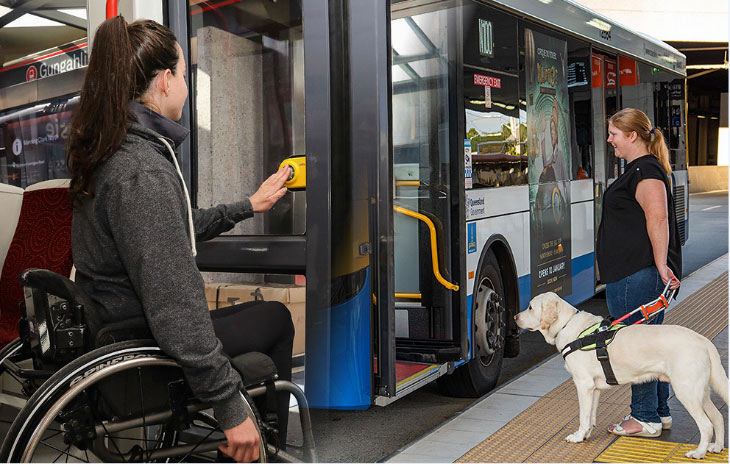Whether you are looking for information about Public Transport, Special Needs Transport, or Rail Travel, this article will give you the information you need. It covers the Design-for-All principles and Low-floor buses that are suitable for people with disabilities.
Public transport
Increasing access to public transport services for disabled people is a key objective identified in the New Zealand Transport Strategy. However, many disabled people feel disadvantaged in terms of accessing public land transport. They experience significant barriers to travel due to a range of factors.
Despite the existence of comprehensive legislation that protects the rights of disabled people, many find it difficult to access public transport. In addition, they often experience issues related to the behavior of fellow passengers and the attitudes of drivers. Some also experience difficulty identifying the right vehicle for their needs.
Accessibility of public land transport is a vital part of participating in society for disabled people. However, disabled people feel disempowered in terms of participation in public land transport funding, planning and implementation.
Rail travel
Using a rail system to travel across the country is a viable option for many, but there are a few things to consider before you set off. The benefits are many and despite the inconveniences, the cost of travelling by rail is often more economical than air travel.
For instance, you could get 50% off a standard single or return ticket. You’ll also be able to enjoy a comfortable wait in an accessible train car. Some carriers even provide retrofitted cars with wheelchair tie-downs.
You can also take advantage of the sunflower lanyard scheme, which is available at all Network Rail managed stations. The Sunflower Lanyard is designed to allow non-visible disabilities to communicate.
There are also more complicated and complex ways to travel by rail, which require a little more research. The Office of Rail and Road has a website dedicated to information on accessible travel. They have also published proposals to improve the experience of disabled passengers.
Low-floor buses
Compared to high floor buses, Low-floor buses have a low deck for wheelchair users and are designed to be more accessible. They have a number of other advantages to all passengers.
Low-floor buses are also equipped with extendable ramps that make it easy for passengers to board and exit the bus. This helps to reduce the time passengers spend at the bus stop.
Aside from the obvious benefit of a low-floor bus, passengers with disabilities also benefit from a lowered entrance. Low-floor buses are also designed to provide more comfort for passengers on rough terrain.
Low-floor transit buses are also designed to be corrosion-resistant. They also include features such as LED display boards and air conditioning. They also provide equal access for all passengers.
A low-floor bus may also include a wheelchair lift to help make nearly level entries into the vehicle. These vehicles are also able to hold more luggage than an interior bus.
Special needs transportation
Whether or not you live in Manhattan or the Emerald Triangle you will appreciate that you have access to an unfettered plethora of public transportation options. Not to mention, many of these services are free of charge. In fact, many of them are run by government agencies. A good place to start is your local municipal bus system. There are even services available for the handicapped in the form of paratransit buses. This is not to mention the many nonprofit organizations that cater to the needs of disabled people. One such organisation, based in Washington D.C., is the oldest of its kind in the country. The organisation’s mission is to provide access to the highest quality transportation and services to the nation’s disabled citizens. This is a worthwhile endeavor as it enables thousands of disabled individuals to maintain a sense of dignity and independence.
Design-for-all principles
Creating accessible transportation services for disabled people is a challenge. Mobility constraints are a major barrier to inclusive development. They also exacerbate social isolation and poverty for persons with disabilities.
Universal Design is an approach to creating an environment that benefits everyone. It is not limited to disability, but can also address civil rights issues such as discrimination. It can also be applied to land use.
Universal Design should be comprehensive. It should include all possible obstacles. It should also consider the needs of all users, including those with physical disabilities. It can also be modified at low cost.
Many urban transportation systems are designed for people who are “average”. They create barriers for persons with disabilities. Universal Design can help remove these barriers and improve the walking conditions of people with disabilities. For example, curb cuts and sloped entrances can help people with disabilities navigate through a building.

